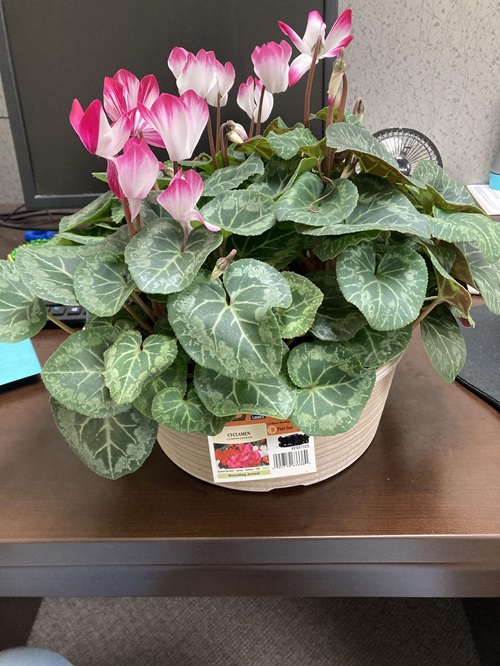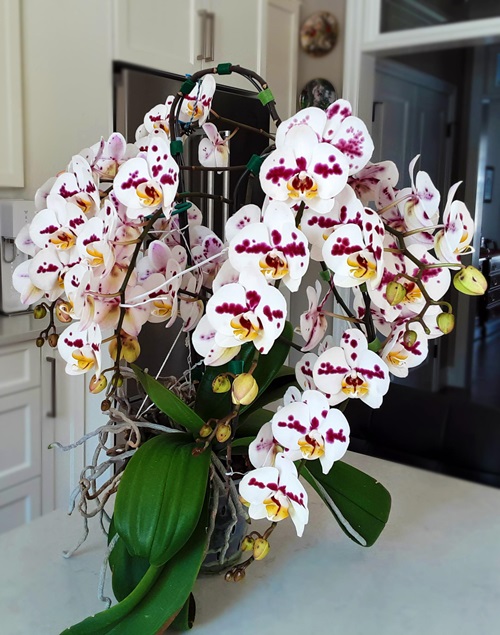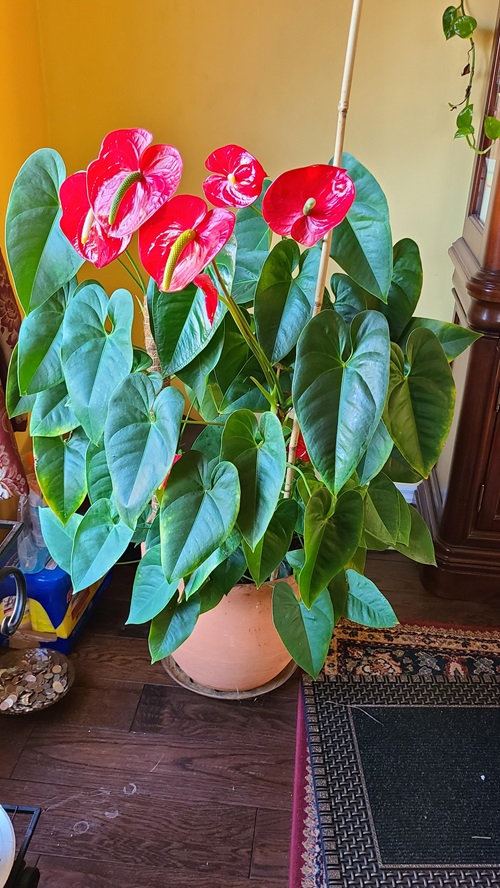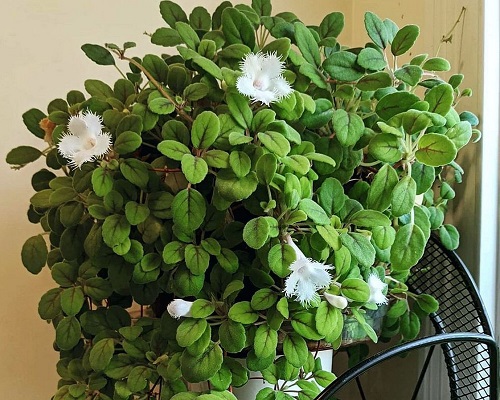Warm up your indoor decor with these houseplants that bloom in winter. These cold-hardy flowers will give your home an instant makeover!
A crackling fireplace, a cup of tea, and stunning winter flowers by the mantle—what is a more fitting image of warm indoor decor as the world outside is covered in snow? If it gets nippy where you live, these houseplants that bloom in winter are a must-have!
Houseplants that Bloom in Winter
1. Florist’s Cyclamen
Botanical Name: Cyclamen persicum
From Christmas to Valentine’s Day, the florist’s cyclamen rocks the potted flowering houseplant section with its heart-shaped leaves and scented white to red blooms. While it’s winter-hardy in zones 9-11, this perennial cannot tolerate frost.
In colder zones, keep it cozy by a sunny windowsill with filtered light in a well-draining potting medium. Through winter and spring, you can enjoy the contrasting sights of snow outdoors and its delicate pastel blooms indoors. And come summer, it goes dormant.
Note: The flower contains saponins that can lead to health issues if ingested.
2. Moth Orchids
Botanical Name: Phalaenopsis
Another winter flower that blooms indoors is the exquisite moth orchid. Hardy outdoors in zones 9b-12, which enjoy mild winters, it can bloom in colder regions if you keep indoor nighttime temperatures above 55 F (12 C), with ample low light and humidity to trigger flower spikes.
With flowers that grow up to six inches and bear sketch-like patterns, moth orchids are tropical epiphytes that will flourish in the filtered warmth of an east-facing window sill. They’ll bloom in late winter and give you flowers that last through spring.
3. Poinsettia
Botanical Name: Euphorbia pulcherrima
Poinsettia is a classic winter-blooming shrub that can also grow indoors as a compact houseplant. It produces tiny yellow flowers around Christmas, but the real attraction is its modified red leaves! It thrives in partial shade with occasional watering, pruning, and fertilization.
In zones 9-11, you can even grow it outdoors as a small tree. Poinsettias bloom mid-winter, typically from October through December and often into January.
4. Kalanchoe
Botanical Name: Kalanchoe
Kalanchoe, also known as “Flaming Katy,” is a must-have indoor plant for sunnying up your home decor during fall and winter. The cold season’s reduced sunlight hours also help trigger its blooms.
Known for its thick, succulent leaves and clusters of pink, red, orange, and yellow flowers, there are several beautiful kalanchoe varieties to pick from.
It needs about six to eight hours of dappled sunshine to thrive; so place your potted kalanchoe in the right sunny spot in your home.
5. Natal Lily
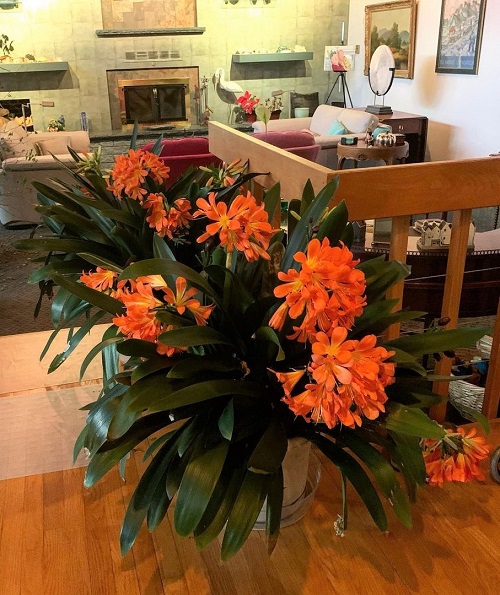
Botanical Name: Clivia miniata
These broadleaf perennials naturally flourish in South Africa and Swaziland’s subtropical forests and bushlands. However, you can coax them into pushing out their bold orange, bell-shaped blooms indoors, even in a cool North American winter!
Hardy to zones 9-11, when grown as a potted houseplant in cooler winters, it needs filtered morning sun and prefers being slightly rootbound. Remember to give it a dormant period in temperatures below 50 F (10 C) for a month or two to get it to bloom!
6. Christmas Cactus
Botanical Name: Schlumbergera
You can get your Christmas cactus to bloom right when the holiday season kicks in. It needs prolonged periods of darkness to produce its famous tubular white to scarlet blooms that dangle from the plant’s flat, segmented, cascading leaves.
This rainforest native needs lots of moisture and the fall month’s indirect, filtered light to increase the quantity and quality of winter blooms. It can bloom through a hundred Christmases, as it has an extremely long lifespan.
7. Bird of Paradise
Botanical Name: Strelitzia reginae
If you want to turn your indoor garden into a “paradise,” there is no better tropical plant than the bird of paradise! Not only does this plant bloom in winter, but it can intermittently flower throughout the year if the right conditions are provided.
Its orange, purple, white, and blue blooms resemble a bird’s head and emerge from large, glossy gray-green leaves. Bird of paradise is native to tropical South Africa. So when growing indoors in winter, keep temperatures around 55-70 F (12-21 C).
Blooming from September to May, follow these tips to make it thrive.
8. Amaryllis
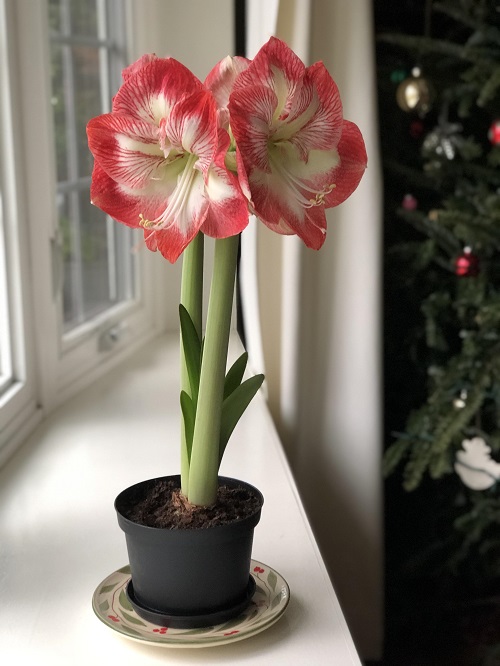
Botanical Name: Hippeastrum
Amaryllis is a perennial that is a visual treat, especially in the winter months, due to its large, trumpet-shaped red, white, or pink flowers. This plant needs a steady and long dormant period to re-energize and produce its iconic blooms.
Plant the bulbs a couple of months before winter. If you already have a plant, move it to a dark and cool location for 7-8 weeks and then back to a bright and warm place. Here’s more info on growing it indoors.
Note: It contains the alkaloid lycorine, which can harm pets and humans when ingested.
9. Anthurium
Botanical Name: Anthurium
Anthuriums, or flamingo flowers, are tropical perennials that bloom abundantly as houseplants in winter with proper care. They sport glossy, heart-shaped leaves and long-lasting red and pink, thick-veined spathes.
Since these plants are toxic if ingested, consider growing them high above the reach of your pets.
10. Lace Flower
Botanical Name: Alsobia dianthiflora
Alsobia produces almost unreal flowers. Its blooms resemble soft, fringed pieces of fabric, and is a close cousin of the African violet with similar furry leaves.
This houseplant needs warmth, humidity, and soft light to produce its delightful winter flowers.
Keep it on an east-facing windowsill or under grow lights that are placed about a foot and a half away from the plant.


